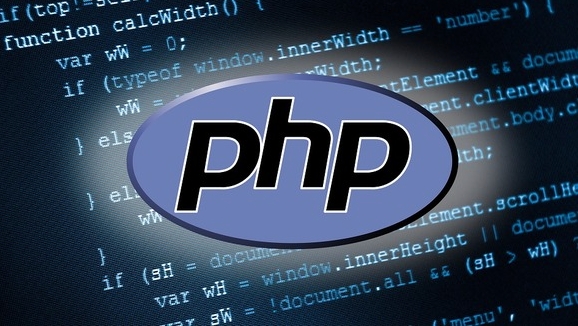In PHP, you can add hours to date and time by using the DateTime class with the modify() or add() method. Use the modify() method to pass in string parameters similar to '3 hours' to directly modify the original object, which is suitable for simple adjustment; if you do not want to change the original object, you need to clone it before operation; use the add() method, you need to cooperate with the DateInterval object, such as 'PT2H', which means adding two hours, which is more suitable for structured development; DateTimeZone should be set when processing time zones to ensure accuracy; for old versions of PHP, you can use strtotime() to implement it, but it is not recommended for complex logic. Choosing the right method to keep the code clear is key.

In PHP, it is a common requirement to add hours to date and time. For example, you often use this operation when processing order timeouts, task reminders or timing functions. It is actually very simple to implement, mainly through DateTime class combined with modify() or add() method.

Use modify() method to add hours
modify() is a very straightforward method, suitable for simple time adjustments. You can pass in string parameters like 2 hours to increase the time.

$date = new DateTime(); $date->modify(' 3 hours'); echo $date->format('Ymd H:i:s');
This code outputs the current time plus the time after 3 hours.
The advantage of this method is that it is intuitive in writing and is suitable for rapid development. However, it should be noted that modify() is modified based on the original object. If you do not want to change the original object, you can clone a copy first and then operate:
$newDate = clone $date; $newDate->modify(' 2 hours');
Use add() method to add more standardized hours
If you want to use a more object-oriented approach, it is recommended to use the add() method and cooperate with the DateInterval object:

$date = new DateTime(); $date->add(new DateInterval('PT2H')); echo $date->format('Ymd H:i:s');
Here PT2H means "Period of Time, 2 Hours". This writing method is more standard and is more suitable for complex time operations (such as adding days, minutes, months, etc.).
- If you want to add 5 hours and 30 minutes:
PT5H30M - Add one day and two hours:
P1DT2H
Process date and time with time zone
If your application involves multiple time zones, remember to set the time zone to avoid deviations:
$date = new DateTime('now', new DateTimeZone('Asia/Shanghai')); $date->add(new DateInterval('PT4H')); echo $date->format('Ymd H:i:s');
This ensures that the time you operate is based on a specific time zone and there will be no problems due to different server default time zones.
Notes and FAQs
- The
DateTimeobject is mutable, and many methods will directly modify it. - Don't confuse
modify()andadd(). Although both can add time,add()is more suitable for structured development. - If your project uses PHP version below 5.3,
DateIntervalmay not be available. It is recommended to upgrade or usestrtotime()instead.
For example, use strtotime() to implement:
$time = strtotime("now 2 hours");
echo date("Ymd H:i:s", $time);However, this method is not recommended for complex logic, especially when frequent operation of time objects are required.
Basically that's it. Choose the right method according to the actual scenario, and keeping the code clear and easy to maintain is the most important thing.
The above is the detailed content of php add hours to datetime. For more information, please follow other related articles on the PHP Chinese website!

Hot AI Tools

Undress AI Tool
Undress images for free

Undresser.AI Undress
AI-powered app for creating realistic nude photos

AI Clothes Remover
Online AI tool for removing clothes from photos.

Clothoff.io
AI clothes remover

Video Face Swap
Swap faces in any video effortlessly with our completely free AI face swap tool!

Hot Article

Hot Tools

Notepad++7.3.1
Easy-to-use and free code editor

SublimeText3 Chinese version
Chinese version, very easy to use

Zend Studio 13.0.1
Powerful PHP integrated development environment

Dreamweaver CS6
Visual web development tools

SublimeText3 Mac version
God-level code editing software (SublimeText3)

Hot Topics
 What are some best practices for versioning a PHP-based API?
Jun 14, 2025 am 12:27 AM
What are some best practices for versioning a PHP-based API?
Jun 14, 2025 am 12:27 AM
ToversionaPHP-basedAPIeffectively,useURL-basedversioningforclarityandeaseofrouting,separateversionedcodetoavoidconflicts,deprecateoldversionswithclearcommunication,andconsidercustomheadersonlywhennecessary.StartbyplacingtheversionintheURL(e.g.,/api/v
 How do I implement authentication and authorization in PHP?
Jun 20, 2025 am 01:03 AM
How do I implement authentication and authorization in PHP?
Jun 20, 2025 am 01:03 AM
TosecurelyhandleauthenticationandauthorizationinPHP,followthesesteps:1.Alwayshashpasswordswithpassword_hash()andverifyusingpassword_verify(),usepreparedstatementstopreventSQLinjection,andstoreuserdatain$_SESSIONafterlogin.2.Implementrole-basedaccessc
 What are the differences between procedural and object-oriented programming paradigms in PHP?
Jun 14, 2025 am 12:25 AM
What are the differences between procedural and object-oriented programming paradigms in PHP?
Jun 14, 2025 am 12:25 AM
Proceduralandobject-orientedprogramming(OOP)inPHPdiffersignificantlyinstructure,reusability,anddatahandling.1.Proceduralprogrammingusesfunctionsorganizedsequentially,suitableforsmallscripts.2.OOPorganizescodeintoclassesandobjects,modelingreal-worlden
 What are weak references (WeakMap) in PHP, and when might they be useful?
Jun 14, 2025 am 12:25 AM
What are weak references (WeakMap) in PHP, and when might they be useful?
Jun 14, 2025 am 12:25 AM
PHPdoesnothaveabuilt-inWeakMapbutoffersWeakReferenceforsimilarfunctionality.1.WeakReferenceallowsholdingreferenceswithoutpreventinggarbagecollection.2.Itisusefulforcaching,eventlisteners,andmetadatawithoutaffectingobjectlifecycles.3.YoucansimulateaWe
 How can you handle file uploads securely in PHP?
Jun 19, 2025 am 01:05 AM
How can you handle file uploads securely in PHP?
Jun 19, 2025 am 01:05 AM
To safely handle file uploads in PHP, the core is to verify file types, rename files, and restrict permissions. 1. Use finfo_file() to check the real MIME type, and only specific types such as image/jpeg are allowed; 2. Use uniqid() to generate random file names and store them in non-Web root directory; 3. Limit file size through php.ini and HTML forms, and set directory permissions to 0755; 4. Use ClamAV to scan malware to enhance security. These steps effectively prevent security vulnerabilities and ensure that the file upload process is safe and reliable.
 How can you interact with NoSQL databases (e.g., MongoDB, Redis) from PHP?
Jun 19, 2025 am 01:07 AM
How can you interact with NoSQL databases (e.g., MongoDB, Redis) from PHP?
Jun 19, 2025 am 01:07 AM
Yes, PHP can interact with NoSQL databases like MongoDB and Redis through specific extensions or libraries. First, use the MongoDBPHP driver (installed through PECL or Composer) to create client instances and operate databases and collections, supporting insertion, query, aggregation and other operations; second, use the Predis library or phpredis extension to connect to Redis, perform key-value settings and acquisitions, and recommend phpredis for high-performance scenarios, while Predis is convenient for rapid deployment; both are suitable for production environments and are well-documented.
 What are the differences between == (loose comparison) and === (strict comparison) in PHP?
Jun 19, 2025 am 01:07 AM
What are the differences between == (loose comparison) and === (strict comparison) in PHP?
Jun 19, 2025 am 01:07 AM
In PHP, the main difference between == and == is the strictness of type checking. ==Type conversion will be performed before comparison, for example, 5=="5" returns true, and ===Request that the value and type are the same before true will be returned, for example, 5==="5" returns false. In usage scenarios, === is more secure and should be used first, and == is only used when type conversion is required.
 How do I perform arithmetic operations in PHP ( , -, *, /, %)?
Jun 19, 2025 pm 05:13 PM
How do I perform arithmetic operations in PHP ( , -, *, /, %)?
Jun 19, 2025 pm 05:13 PM
The methods of using basic mathematical operations in PHP are as follows: 1. Addition signs support integers and floating-point numbers, and can also be used for variables. String numbers will be automatically converted but not recommended to dependencies; 2. Subtraction signs use - signs, variables are the same, and type conversion is also applicable; 3. Multiplication signs use * signs, which are suitable for numbers and similar strings; 4. Division uses / signs, which need to avoid dividing by zero, and note that the result may be floating-point numbers; 5. Taking the modulus signs can be used to judge odd and even numbers, and when processing negative numbers, the remainder signs are consistent with the dividend. The key to using these operators correctly is to ensure that the data types are clear and the boundary situation is handled well.






